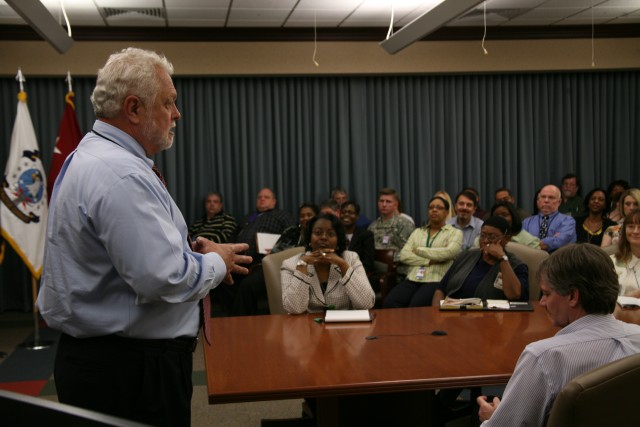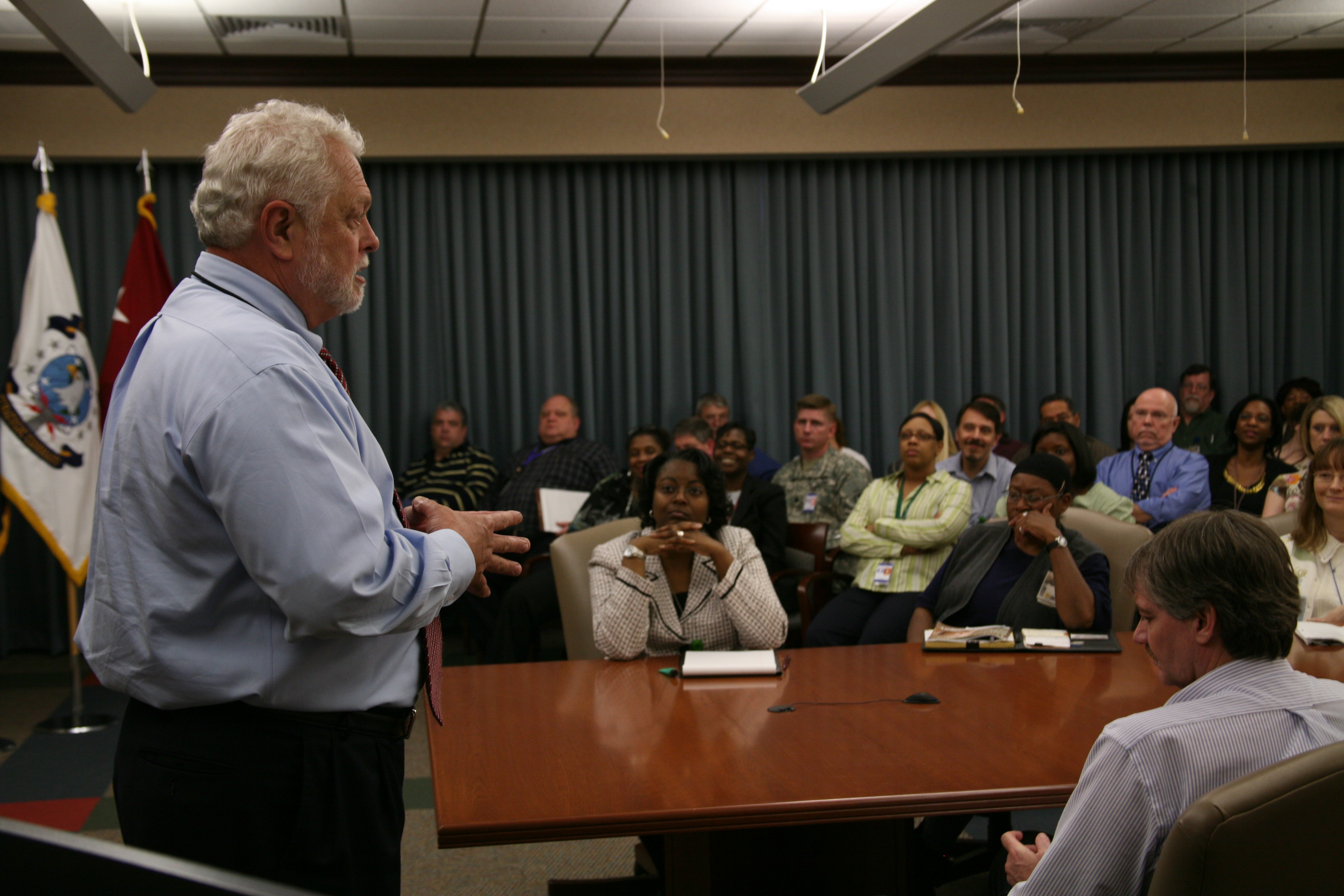
Redstone Arsenal, Ala. -- National Vital Statistics from 2005 show that adults are almost 2.5 times more likely to die by their own hand than from someone else's.
And with Soldier suicide rates approaching those on the civilian side, the Army has taken a proactive approach to ensure that the entire military and civilian workforce is trained in suicide awareness and prevention.
The U.S. Army Space and Missile Defense Command/Army Forces Strategic Command wrapped up Phase I of this Department of the Army-mandated training March 13. The training, consisting of a video and presentation, was facilitated by Richard Lewis, certified employee assistance professional at Redstone Arsenal.
"My biggest complaint about suicide in our culture is that it is a secret," Lewis said. "Nobody talks about it. You can't prevent something you're not willing to talk about."
The video presented during the training was designed for a military audience, but is still applicable to civilians, Lewis said.
"You work with military and it may well be that you are the person someone chooses to talk to about issues that they're not speaking with anyone else about," he said. "Everything in this training is applicable to any human being alive."
Lewis said there are a number of reasons people cite for not seeking help - security clearances and job security are among the top.
"I don't talk to security. I don't talk to your supervisor," Lewis said. "If you come see me, it's between us."
Another reason often cited, according to Lewis, is the stigma of being a "wimp."
"We are trying to eradicate the stigma (associated with getting help)," Lewis said. "Everybody needs help at one time or another. We have to have the willingness to get help."
This training, said Lewis, is designed to increase awareness of suicidal behaviors, encourage actions that may prevent a suicide, and above all, to reinforce the need to intervene when confronted with someone who may be suicidal.
"Suicide is not a desire to die. Suicide is a desire to escape a current pain," Lewis said. "They want to stop hurting. They're tired of hurting. They can't turn it off. They don't know how to turn it off. The ways they've turned it off in the past are not working, and what they are looking for is an alternative that will work."
Phase II of the suicide awareness and prevention training began March 15 and ends July 15.
"This phase of the training is geared for first-line supervisor equivalents," said Maj. Pamela Tingle, USASMDC/ARSTRAT Headquarters and Headquarters Company commander. "It is being conducted to increase awareness of suicide risk factors and warning signs and also to encourage intervention for at-risk Soldiers."
In 2008, 142 Soldiers committed suicide, with 13 still pending final determination.
"Army leadership is committed to reversing this trend," Tingle said.
Carrie.E.David@us.army.mil
Author's Note: The National Vital Statistics data can be found online at: http://www.cdc.gov/nchs/hdi.htm

Social Sharing